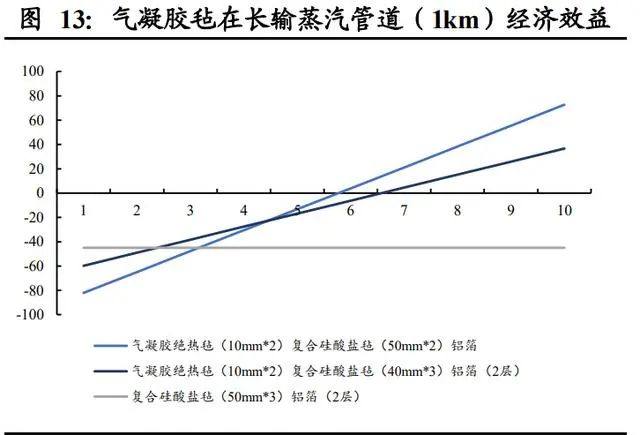Hits: 147 img
Aerogel materials are mainly used in the field of energy and chemical industry as external insulation materials for energy infrastructure, including insulation materials for distillation towers, reaction pipelines, storage tanks, pumps, valves, insulation materials for natural gas and LNG pipelines, deep-sea pipeline insulation materials, and insulation materials for power plant equipment.
The hydrophobicity of aerogel can make the insulation layer of the pipeline waterproof and prevent condensation reactions caused by temperature differences. When aerogel has the same insulation effect, the required thickness or spacing of the aerogel insulation layer is smaller, and the overall cost is significantly reduced. The application environment of pipeline insulation is complex, including indoor insulation, outdoor insulation, and direct buried pipeline insulation. Compared with indoor and outdoor pipeline insulation, the application of aerogel felt as an insulation material in direct buried pipeline insulation highlights the outstanding characteristics of aerogel, which can reduce the thickness of the insulation layer and reduce the amount of earthwork and construction period. The cost reduction of these two items can completely offset the cost of choosing aerogel as an insulation material.
Composite with traditional insulation materials is expected to achieve the best economy. Aerogel is mainly used for thermal insulation. As a new type of material that has not yet been widely popularized, the disadvantage of aerogel thermal insulation materials is that they are expensive and require a large initial investment. However, due to their excellent aging resistance, dimensional stability, hydrophobicity, thermal insulation performance and ease of construction, they will show comprehensive advantages after being put into use for a certain period of time. According to a study by the China Petroleum Pipeline Technology Research Center, the thermal insulation performance, initial investment costs, and operation and maintenance costs of aerogel materials and traditional thermal insulation materials on steam pipelines and ground pipelines were compared in three insulation schemes. It was found that the use of aerogel materials on pipelines has greater comprehensive advantages than traditional thermal insulation materials. The energy and operation and maintenance costs saved by using aerogel materials (mainly referring to the material and labor costs of replacing the traditional insulation layer) can exceed the initial investment within 2 to 4 years. In the subsequent use process, it can save costs for pipeline operators due to energy savings and reduced replacement times of the insulation layer. In addition, when the temperature difference between the inside and outside of the pipeline is large, the annual heating time is long, or the heating fuel or electricity price increases, the combined use of aerogel materials and traditional insulation materials will be more effective.

Aerogel materials are easy to construct and improve construction efficiency by more than 30%. After cutting aerogel felt into a certain size, a certain degree of curvature will be generated, which can be directly placed on the pipeline for installation and fixation. Aerogel felt is light, has a certain hardness, strong flexibility, is not easy to break, and is very easy to cut. Compared with traditional insulation materials, the construction efficiency is increased by more than 30%, and the worry that traditional insulation materials are inconvenient to maintain in the later use is also avoided.
Although the initial investment of aerogel insulation is higher than that of traditional materials, its many excellent properties, lasting energy-saving benefits, and significant green environmental protection advantages make it an energy-saving product with a high comprehensive cost-effectiveness. High-temperature steam, heat transfer oil, and process fluid medium pipelines are vital equipment in thermal power, oil refining, chemical industry and other fields. The pipelines are exposed to the air all year round, and their heat loss accounts for the vast majority of the natural heat loss of the entire plant area. The energy retention rate of the transported medium is directly related to the quality and quantity of the product, so it is very important to select excellent insulation materials. At present, the refineries of large petrochemical companies such as ExxonMobil, Shell, Chevron, PetroChina, Huachang Chemical and other companies in the world all use aerogel materials as insulation materials.
The domestic large-scale refining and chemical industry is rising rapidly, and the application scenarios of aerogel are expanding. According to data, my country's refining capacity exceeded 850 million tons in 2019. From 2020 to 2023, my country will add 165 million tons of refining capacity, an increase of 19.4%. From 2020 to 2025, the world will add about 267 million tons of refining capacity. The expansion of refining capacity in China and the world will bring certain growth space for aerogel composites.
The energy and chemical field is currently the main application market for aerogel materials. According to the forecast of Aspen Aerogel's 19th annual report, the global market space in the energy and chemical field is about US$3.1 billion.